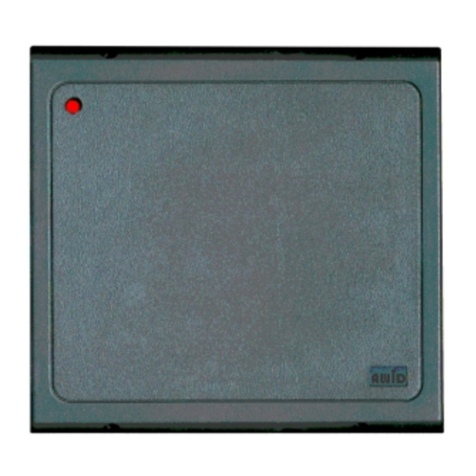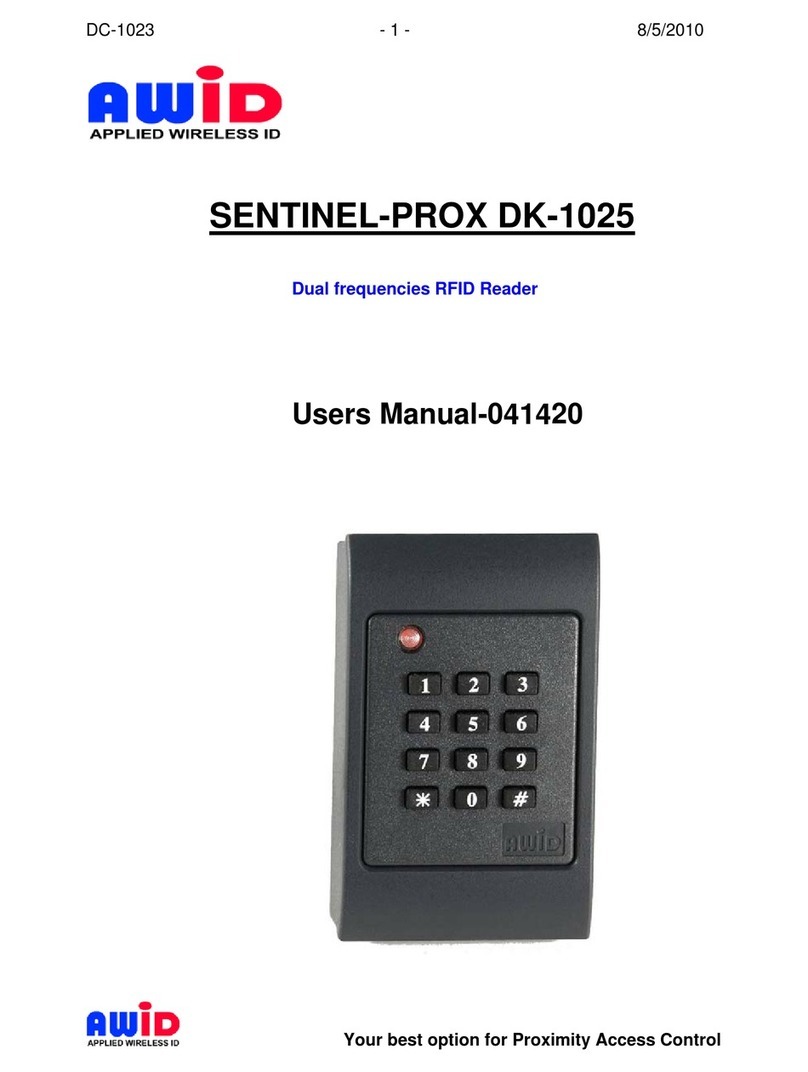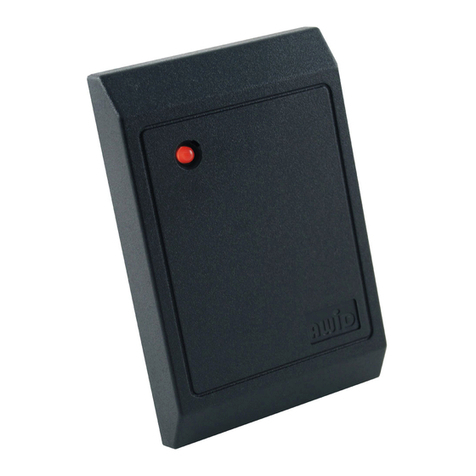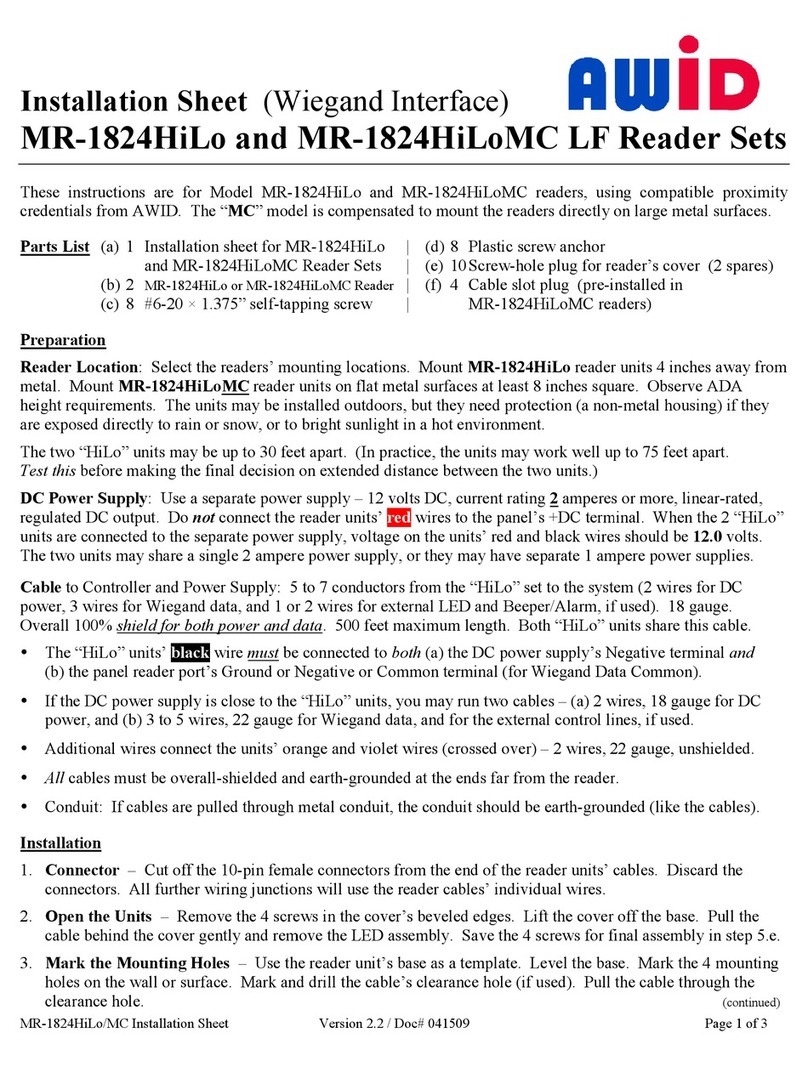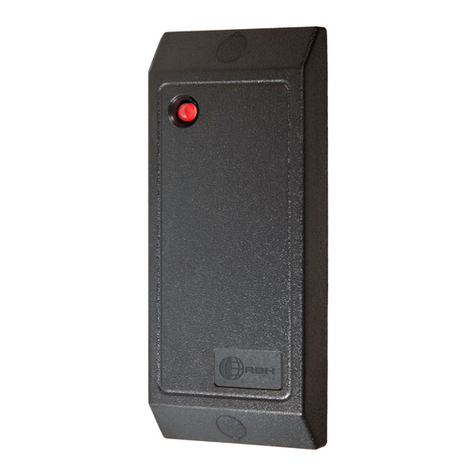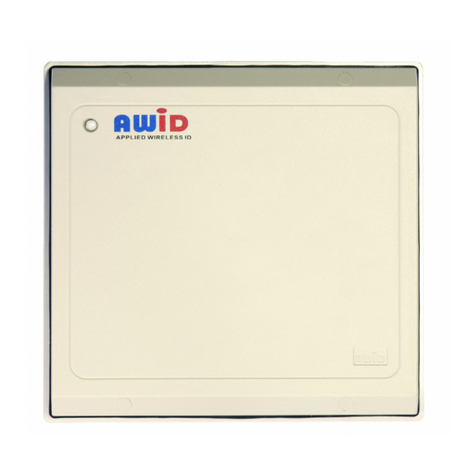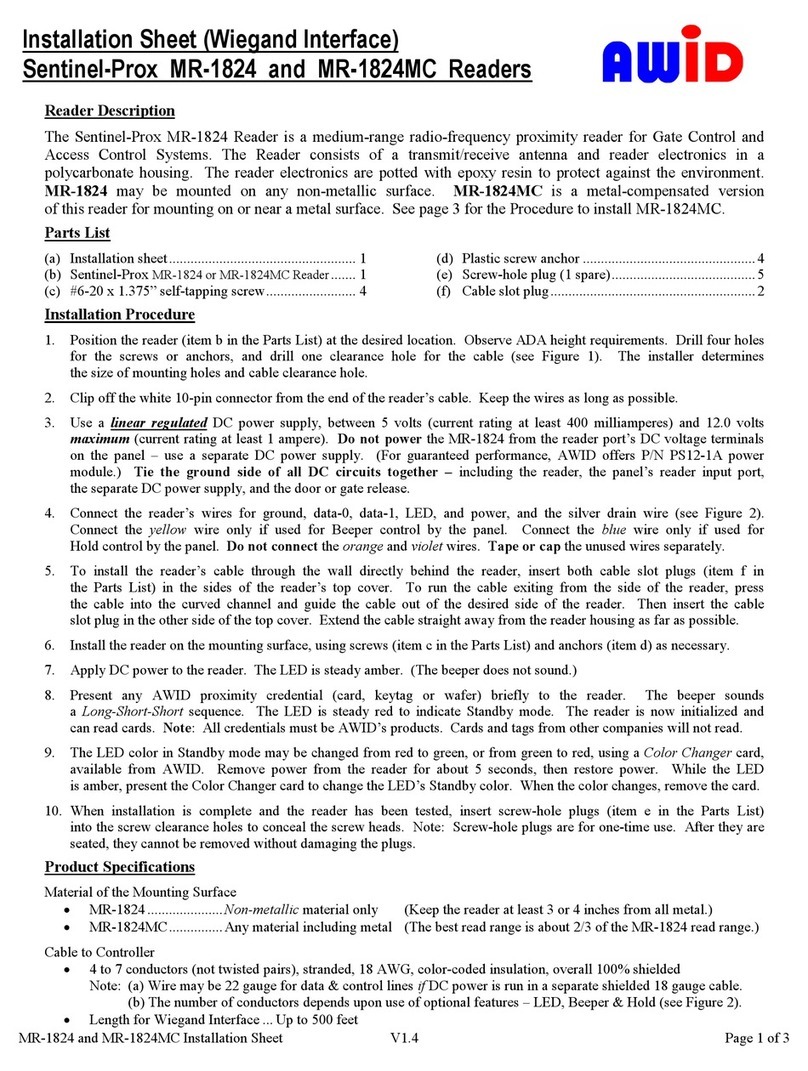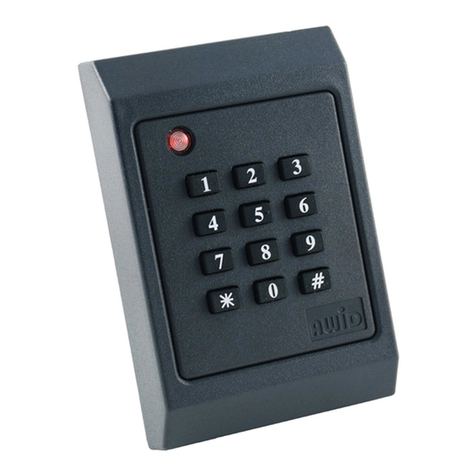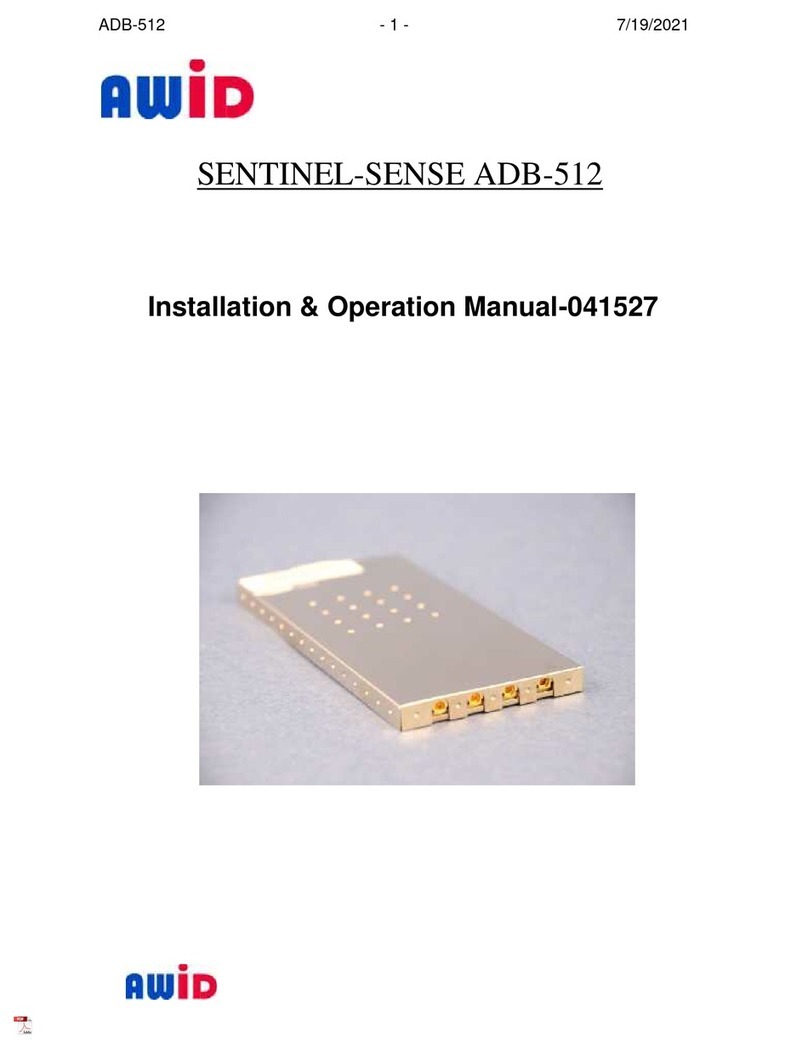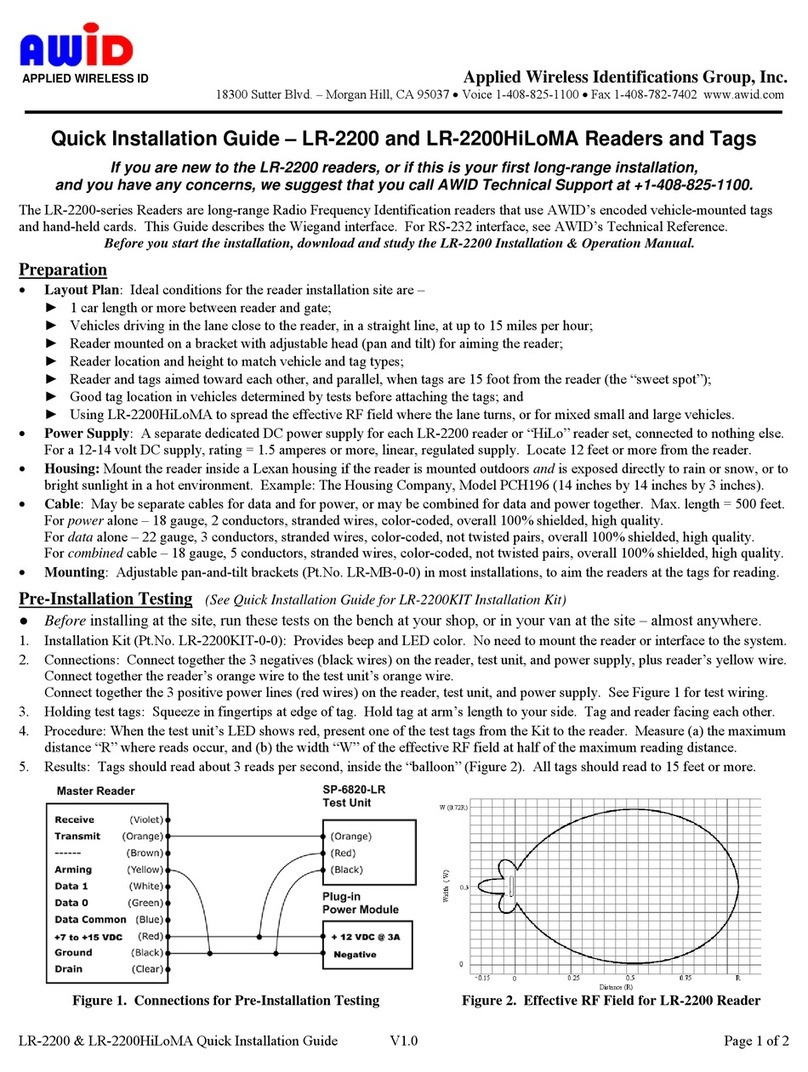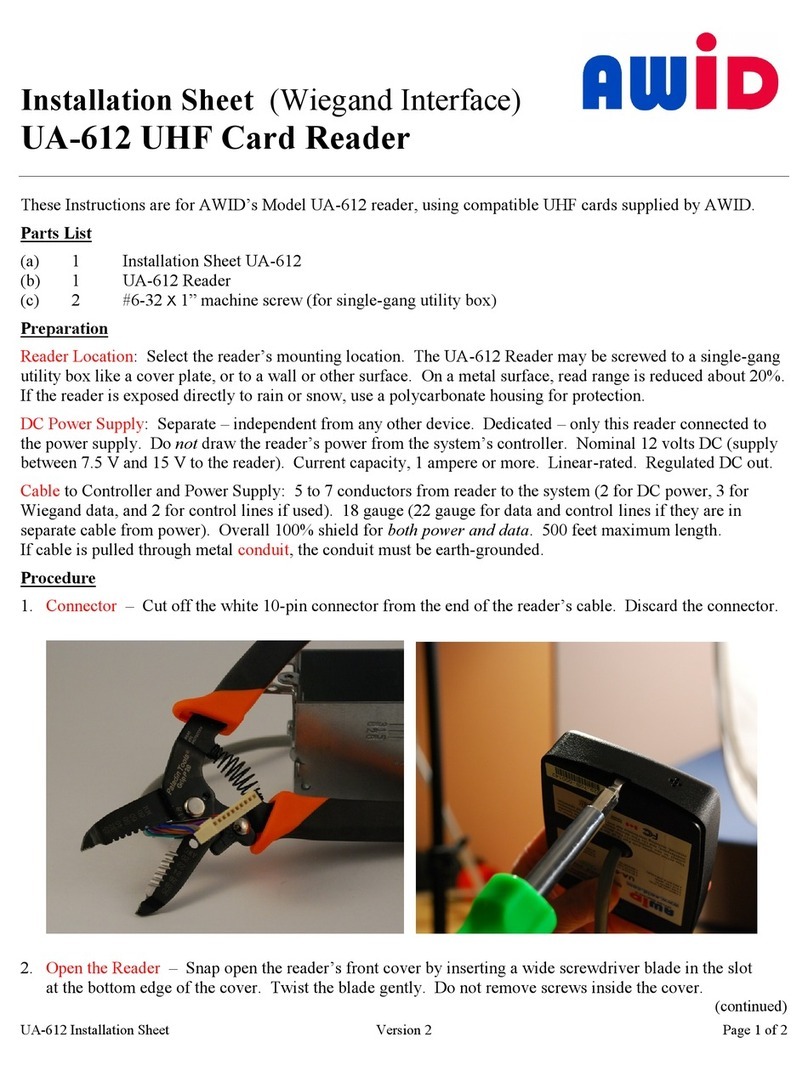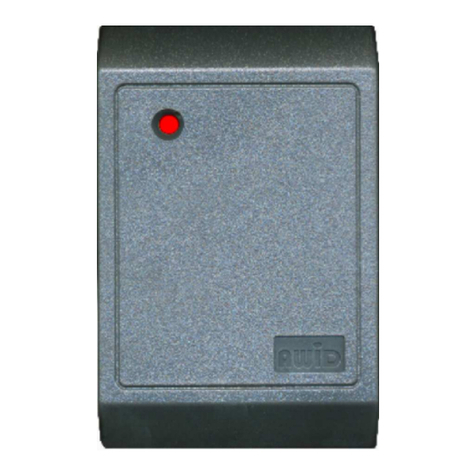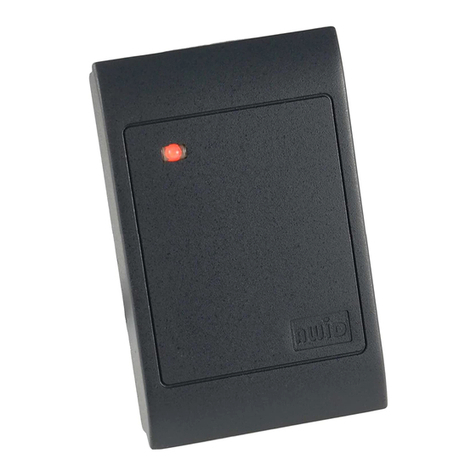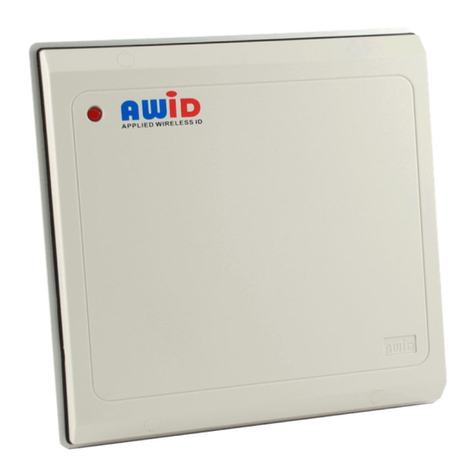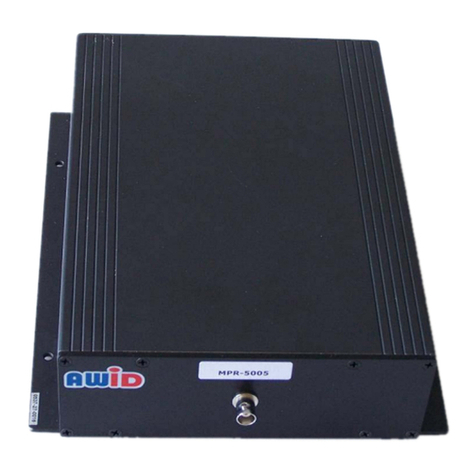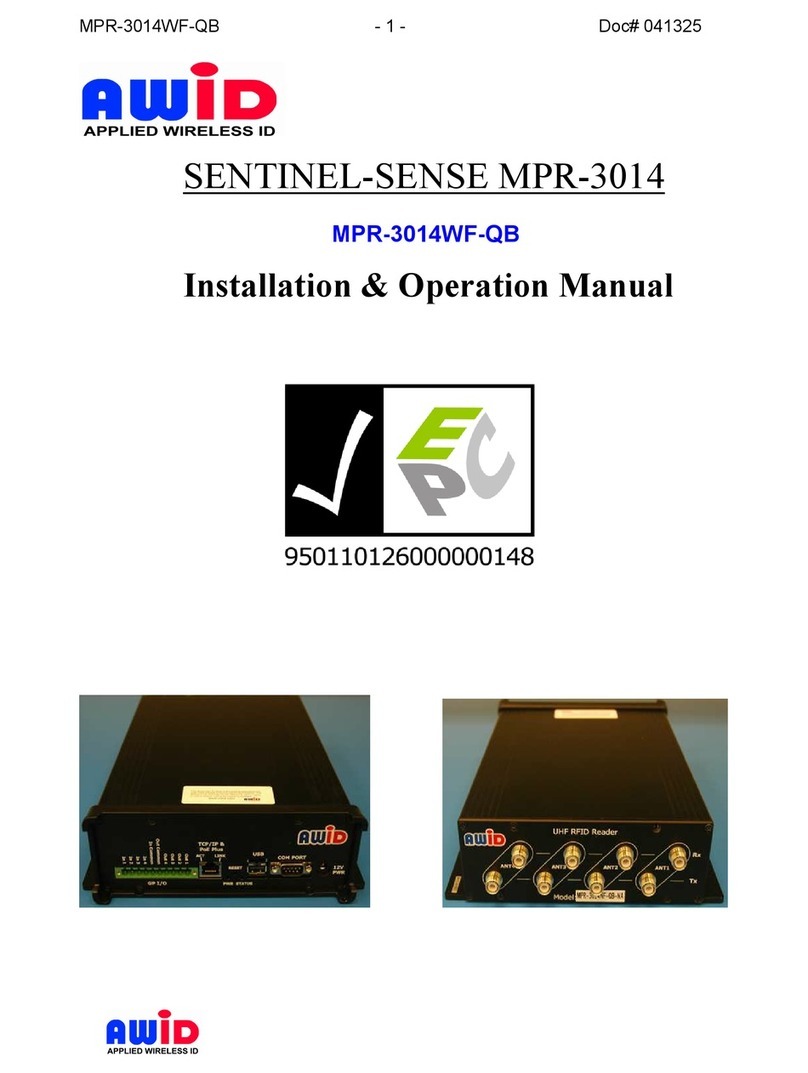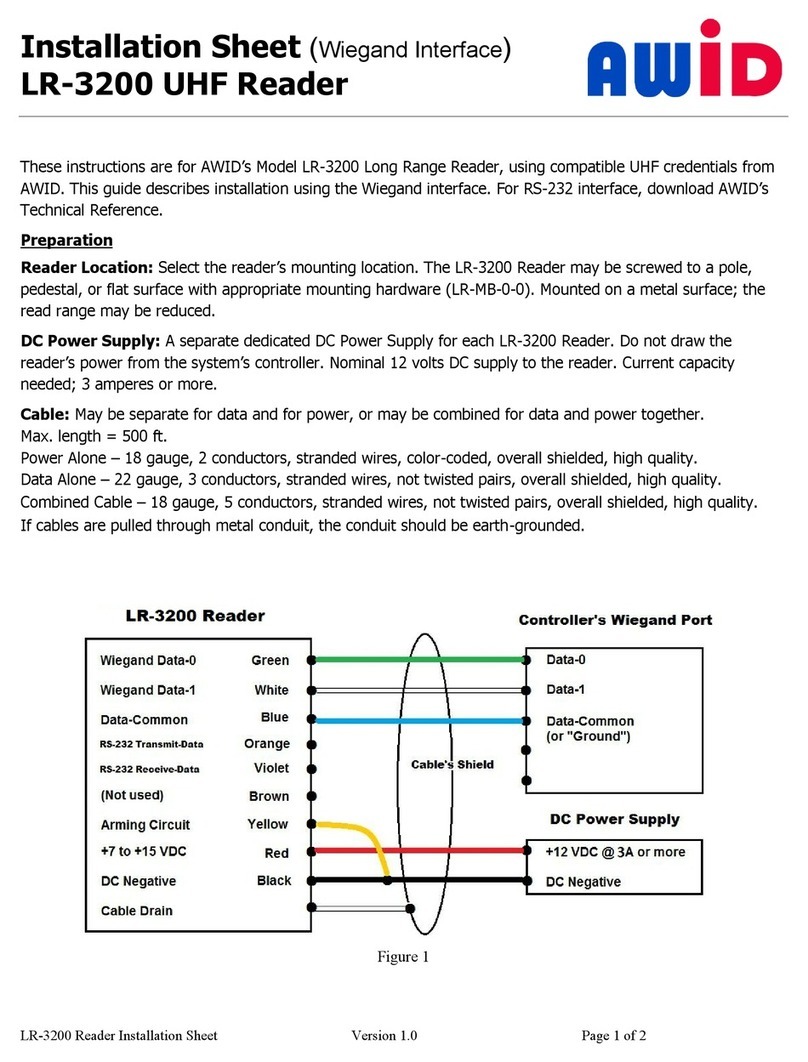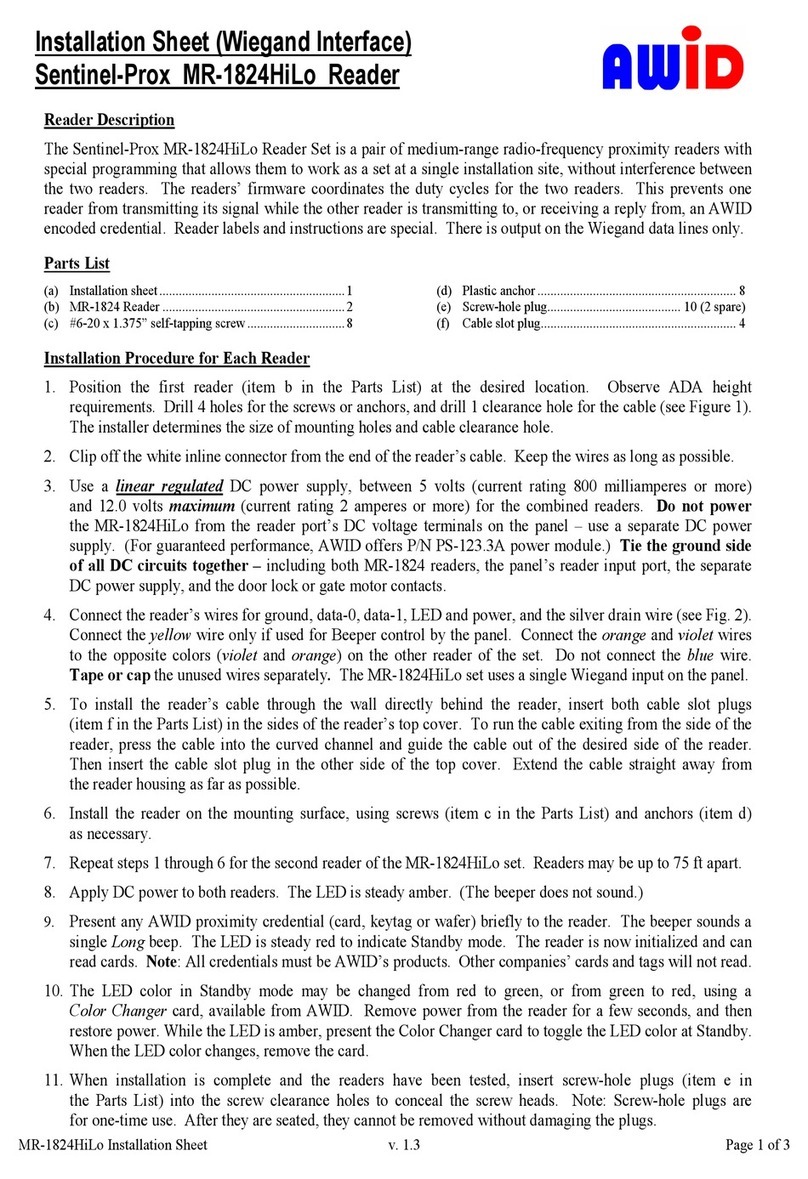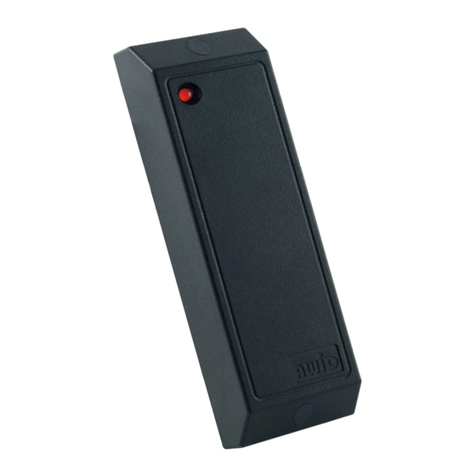LR-3000 Quick Installation Guide Version 1.2 Page 2 of 2
Mounting the Reader and the Remote Antenna (See LR-3000 Installation & Operation Manual, Sections 5, 8 and 9)
1. Fasten the mounting bracket to the pole, post, pedestal, wall or beam. Leave space for the reader unit’s pan -and-tilt adjustment.
2. Fasten the reader to the bracket with 2 ¼”-20 screws. The LR-MB bracket includes fasteners.
3. Aim the reader toward the location of tags when they are mounted on vehicles, for the reading distance (up to 25 fee t).
Wiring the Reader (for Wiegand Interface) (Study Figure 3 carefully. There is no wiring for the reader’s LEDs.)
1. Check the power supply and cable(s) for power and data to be certain that they meet AWID’s specifications (“Preparation”, p. 1).
2. Connect the wires -- yellow to black at the reader; black and red to the power supply; green and white and blue to the controller.
3. Connect the reader’s drain (shield) wire to the shields of all cables. Do not ground drain and shields – they must float.
4. Keep the reader’s orange wire available for connecting the LR-KIT’s test unit. Insulate violet and brown wires separately.
5. Do not tape or bead the wire junctions until the complete system has been tested thoroughly. Keep all junctions accessible.
6. Test the reader using the LR-KIT Installation Kit. A tag, held in fingertips, will be indicated by beeper and LED on the test unit.
Figure 3. Wiring the Complete System for
Wiegand Interface
The blue wire must connect to the panel’s
terminal that serves as Data Common.
Look for a “Common” terminal. If none,
use the “Ground” terminal.
Using Tags and Cards
Select a location for the tags that has clear line-of-sight to the reader. Tags should be aligned with the reader, facing it head -on,
about parallel to the reader at the reading distance. Test the tags using both “landscape” and “portrait” orientation.
VT-UHF Visor Tag: Clip the tag on the sun visor. At the reading distance, the driver lowers the visor so the tag faces the reader.
HT-UHF Hangtag: Hang the tag on the inside rearview mirror’s post. Or hold the tag, by fingertips at its hook, inside the vehicle.
RV-UHF Mirror Tag: Using the tag’s adhesive, press the tag smoothly on the frame of the inside rearview mirror, facing the reader.
WS-UHF Windshield Tag: Using the tag’s adhesive, press the tag firmly inside the glass, 2 inches or more from edge of windshield.
MT-UHF Metal-Mount Tag: Fasten outside or inside the vehicle, by its adhesive, screws, rivets, wire ties, or hook & loop tape.
CS-UHF Clamshell Card and GR-UHF Graphics Card: Hold facing reader with fingers at edge of card. (Use with UA-612 also.)
Programming the System
1. Complete the LR-3000 reader’s interface to the host access control or vehicle identification system.
2. Program the applications system for the type of reader, and for the tags’ code format, facility (or site) code, and card numbers.
3. Assign suitable programming for the individual tags in the cardholders’ database – gate groups, time zones, priority levels, etc.
4. Program the applications for the action to be taken for each val id read – gate motor operation, data recording, reports generation.
Testing the Completed System
1. Drive a vehicle with a mounted tag into the read range on the lane. Observe the code registered by the system for accuracy.
2. Test operation of all functions by driving a vehicle with an authorized tag code past the reader and through the gate repeatedly.
3. Study the PC monitor’s data display for full and correct information about events on the system. Watch for “Access granted”.
4. Enter the command for a report of events in the system – for individual vehicles in a time period and for history at a single gate.
If a Problem Occurs
1. Use the LR-KIT Installation Kit to measure performance of the reader with hand-held test tags. Isolate the problem.
2. On AWID’s Web site, get the Technical Support memo “Support 4 – Trouble-Shooting”. It will identify and cure problems.
3. Visit AWID’s web site (www.awid.com) for product data and downloads. For technical support questions visit …
www.awid.com/support or call 1-800-369-5533 (in the U.S.) or 1-408-825-1100 from 8:00 a.m. to 7:00 p.m. Eastern Time.
